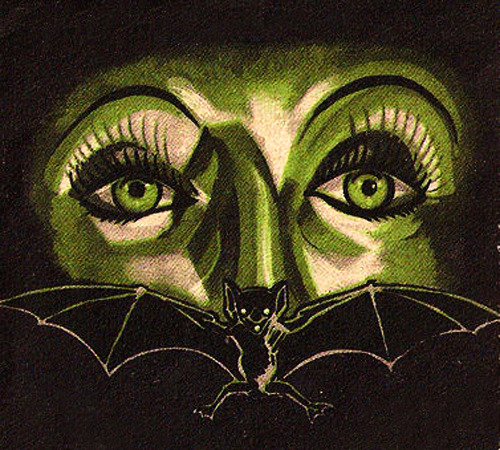#artwor
Explore tagged Tumblr posts
Text

Once Upon a Time (Snow White)
Artist: Henry Meynell Rheam (English, 1859-1920)
Date: n. d.
Medium: Watercolor with bodycolor
Collection: Private Collection
Description
This intriguing, highly detailed watercolor shows a scene from a classic fairy tale as imagined by English pre-Raphaelite Henry Meynell Rheam.
#woods#literary art#snow white#narrative art#conversation piece#artwor#pre raphaelite art#pre raphaelite style#dwarfs#female figure#crown#green gown#white cloak#embroidery#costume#autumn#foliage#painting#watercolor#fine art#english culture#english art#henry meynell rheam#english painter#european art#private collection
79 notes
·
View notes
Text

"Priestess of Delphi" by John Collier, 1891
103 notes
·
View notes
Text

A Hermit (St Jerome ?) in the Wilderness
Artist: Pieter van der Werff (Dutch, 1665–1722)
Date: 1705
Medium: Oil on canvas on wood
Collection: Liechtenstein. The Princely Collections, Vaduz–Vienna, Austria
#genre art#male figure#landscape#hermit#skull#rock#foliage#open book#blue robe#red cloak#bearded man#reading#scroll#painting#oil on canvas#fine art#oil painting#artwor#dutch golden age#dutch culture#dutch art#pieter van der werff#dutch painter#european art#18th century painting#liechtenstein
20 notes
·
View notes
Text

Allegory of the Surrender of Ulm, 20th October 1805
Artist: Antoine François Callet (French, 1741–1823)
Date: n. d.
Medium: Oil painting
Description
Allegorie de la Reddition d'Ulm; General Karl Mack (1752-1828) surrendering to Napoleon Bonaparte (1769-1821); capitulation of Austrian army to French.
#allegorical art#allegorical scene#oil painting#painting#general karl mack#napoleon bonaparte#austrian army#surrender#artwor#fine art#narrative art#chariot#horses#bright light#male figures#female figures#sword#shield#army#warriors#capitulation#french culture#french art#antoine francoise callet#european art
16 notes
·
View notes
Text


black rock shooter i appearently forgot to post here for so long
21 notes
·
View notes
Text

84 notes
·
View notes
Text

Odysseus with Calypso
Artist: Gerard de Lairesse (Dutch, 1641-1711)
Date: ca. 1680
Medium: Oil on canvas
Collection: Rijksmuseum, Amsterdam, Netherlands
Description
Odysseus with Calypso. The naked goddess puts an arm around Odysseus' shoulders. A Cupid places a plumed helmet on her head. In the background a curtain stretched before a tree.
#mythological art#mythological painting#artwork#odysseus#calypso#mythological scene#cupid#male figure#female figure#nude figure#drapery#armour#helmet#arrow#bed#textiles#landscape#foliage#painting#oil on canvas#fine art#oil painting#artwor#dutch culture#dutch art#gerard de lairesse#dutch painter#european art#17th century painting#rijksmuseum
10 notes
·
View notes
Text

#Dracula’s Daughter (1936)#30's#30s#1936#art#artwor#bat#bats#illustration#horror aesthetic#terror aesthetic
146 notes
·
View notes
Text

St. Peter and St. John at the Beautiful Gate of the Temple (after Raphael)
Artist: Sam Heathcote (1656–1708)
Collection: Royal Collection Trust, London, United Kingdom
Description
"St. Peter and St. John at the Beautiful Gate of the Temple (after Raphael)" refers to a biblical scene, depicted in the Acts of the Apostles, where Peter and John heal a lame man at the Beautiful Gate of the Temple, a scene often illustrated in art.
The scene is described in Acts 3:1-10, where a man, lame from birth, begs for alms at the Beautiful Gate of the Temple in Jerusalem.
#painting#biblical scene#narrative art#christianity#artwor#fine art#temple#jerusalem#temple gate#biblical art#classic columns#healing of a lame man#st. peter#st. john#male figures#female figures#children figures#drapery#book of acts#art and the bible#raphael#sam heatcote#european art#royal collection trust
12 notes
·
View notes
Text

The Flight of Jane Shore
Artist: Valentine Cameron Prinsep (British, 1838-1904)
Date: c. 1865
Medium: Oil on canvas
Collection: National Gallery of Victoria, Melbourne, Australia
Description
As a teenager, Val Prinsep was encouraged to paint by the artist George Frederick Watts, who was a long-standing house guest of Prinsep’s parents. According to Watts, in a letter of 1857, ‘I have … plunged him into the Pre-Raphaelite Styx … I found him loitering on the edge and gave him a good shove, and now his gods are Rossetti, Hunt and Millais’. Jane Shore (d. 1527), the influential mistress of Edward IV, was arrested after Edward’s death by the soldiers of Richard III, and imprisoned in the Tower of London. Prinsep shows her just before her arrest, crouching under a bridge, a hunted figure, her hair and clothes dishevelled, as she hides from the soldiers passing above.
#artwor#history#pre raphaelite school#the flight of jane shore#emotion#human figure#woman#bridge#flight#romantic partner#jane shore#soldiers#foliage#tower#painting#oil on canvas#pre raphaelite art#fine art#oil painting#british culture#british history#british art#val prinsep#british painter#european art#19th century painting#national gallery of victoria
20 notes
·
View notes
Text



i wish that atsushi beast had been in the original story instead of atsushi his desayn and his personality instead of all that ,he can transform into completely taiger🤨🤨🤨
#art#bsd fanart#artists on tumblr#bsd#bsd chuuya#bsd dazai#bungo stray dogs#fanart#bsd art#drawing#atsushi nakajima#bsd atsushi#my art#artwor#bsd beast#atsushi beast#atsushi bsd#atsushi bungo stray dogs#atsushi birthday#art on tumblr
34 notes
·
View notes
Text

Three Sisters
Artist: Mabel Pugh (American, 1891–1986)
Date: 1939
Medium: Oil on canvas
Collection: North Carolina Museum of Art, Raleigh, NC, United States
#painting#three sisters#women#sitting#interior#genre art#oil on canvas#fine art#reading#knitting#open book#vase with flowers#chair#artwor#door#table#vase#flowers#bookcase#books#leisure#life scene#mabel pugh#american painter#american culture#20th century painting
45 notes
·
View notes
Text

OPEN EYES! 👀
#art#anime and manga#genshin fanart#genshin impact#digital art#digital drawing#aesthetic#digital illustration#neuvillette#my art#style#artist on tumbler#artisrs on tumblr#oc#oc art#artwor#vibes#my work#workout#love
7 notes
·
View notes
Text

William Hamilton of Bangour, 1704 - 1754. Poet
Artist: Gavin Hamilton (Scottish, 1723 - 1798)
Date: ca. 1748
Medium: Oil on canvas
Collection: National Galleries of Scotland, Edinburgh, Scotland
Description
William Hamilton (1704–1754) was a Scottish poet associated with the Jacobite movement.
The poet William Hamilton, celebrated for his translation of Homer, is shown in this portrait by his cousin, Gavin Hamilton, as he might appear on a classical coin or medal. Painted in profile and dressed in antique fashion, William is framed within a painted oval, decorated with laurel leaves. He is shown again, as the seated figure in the painting below, designed to resemble a sculpture carved in relief. It illustrates an episode from his poem, 'Contemplation or the Triumph of Love'. The portrait was probably painted in 1748 in France where William, a Jacobite supporter, was in exile.
#portrait#bust length#scottish poet#jacobite#profile#antique fashion#oval frame#laurel leaves#contemplation of the triumph of love#art and literature#jacobite poet#red cloak#painting#oil on canvas#fine art#oil painting#artwor#scottish culture#scottish art#gavin hamilton#scottish painter#european art#18th century painting#national galleries of scotland
5 notes
·
View notes
Text

🍵 New updated reference for Mocha! 🍵 Decided to fully do the anthro / feral version of her. (feral coming soon) - - #cuteart #drawing #cute #furryart #chibiart #furryartwork #art #artwork
2 notes
·
View notes
Text

The Martyrdom of Saint Stephen
Artist: Cornelis van Poelenburgh (Dutch, 1594/95–1667)
Date: c. 1620–1625
Medium: Oil on panel
Collection: The Museum of Fine Arts, Houston, Texas, United States
Description
Acts 6:5 introduces a faithful man of God named Stephen: “a man full of faith and of the Holy Spirit.” It is noteworthy that there have always been those faithful believers whose love for and commitment to the Lord seem to shine through so greatly that others around them notice, and Stephen was such a man. Nothing is known about the personal life of Stephen - his parents, his siblings, or whether he had a wife or children; however, what is known about him is what is truly important. He was faithful, even when faced with certain death.
Stephen was one of the seven men chosen to be responsible over the distribution of food to widows in the early church after a dispute arose and the apostles recognized they needed help. He was also "full of God’s grace and power, performed great wonders and signs among the people" (Acts 6:8). Opposition arose, but the men who argued with Stephen were no match for the wisdom given him by the Holy Spirit. So, the men decided to falsely accuse Stephen, labeling him a blasphemer and having him arrested (Acts 6:11-14).
Acts 7 is the record of Stephen’s testimony, which is perhaps the most detailed and concise history of Israel and their relationship to God of any in Scripture. Stephen was not concerned about his earthly existence, determining instead to stand firmly on the side of Jesus Christ, no matter the consequences. God inspired him to speak boldly, rightly accusing Israel of their failure to recognize Jesus, their Messiah, rejecting and murdering Him, as they had murdered Zechariah and other prophets and faithful men throughout their generations. Stephen’s speech was an indictment against Israel and their failure as the chosen people of God who had been given the law, the holy things, and the promise of the Messiah. Naturally, these accusations, though true, were not well received by the Jews.
In his speech, Stephen reminded them of their faithful patriarch, Abraham, and how God had led him from a pagan land into the land of Israel, where He made a covenant with him. He spoke of the journey of his people, through Joseph’s sojourn in Egypt to their deliverance by Moses 400 years later. He brought to mind how Moses had met God in the wilderness of Midian in a burning bush, and he explained how God had empowered Moses to lead His people from idolatry and slavery to freedom and times of refreshing in the Promised Land. Throughout his speech, he repeatedly reminded them of their continual rebellion and idolatry, in spite of the mighty works of God to which they were eyewitnesses, thereby accusing them with their own history, which only irritated them until they did not want to hear any more.
The law of Moses states that the sin of blasphemy deserves a death sentence, usually by stoning (Numbers 15:30-36). Just before these arrogant, unredeemed Jews followed the prescribed penalty and began stoning Stephen, Acts 7:55-56 records his final moments of earthly life, just before he stepped through the veil between heaven and earth: “But Stephen, full of the Holy Spirit, looked up to heaven and saw the glory of God, and Jesus standing at the right hand of God. ‘Look,’ he said, ‘I see heaven open and the Son of Man standing at the right hand of God.’”
#biblical narrative#the martyrdom of saint stephen#biblical art#christianity#landscape#city#saint stephen#men#women#stoning#trees#biblical scene#costume#bible scriptures#biblical#christian faith#artwor#biblical story#christian art#painting#oil on panel#fine art#oil painting#artwork#art and the bible#dutch culture#dutch art#cornelis van poelenburgh#dutch painter#european art
1 note
·
View note